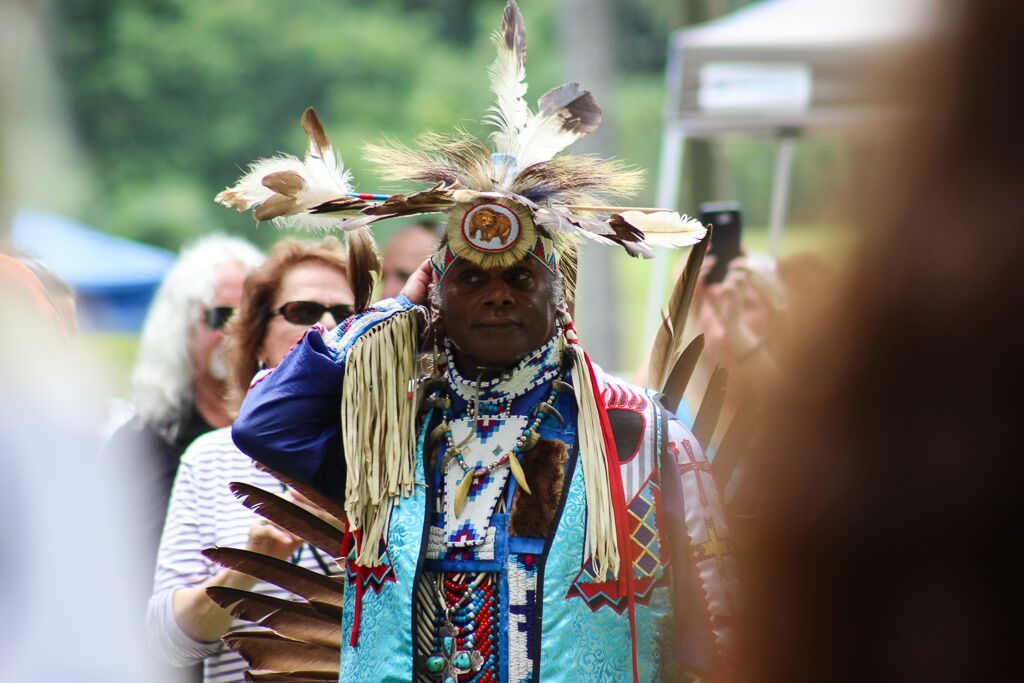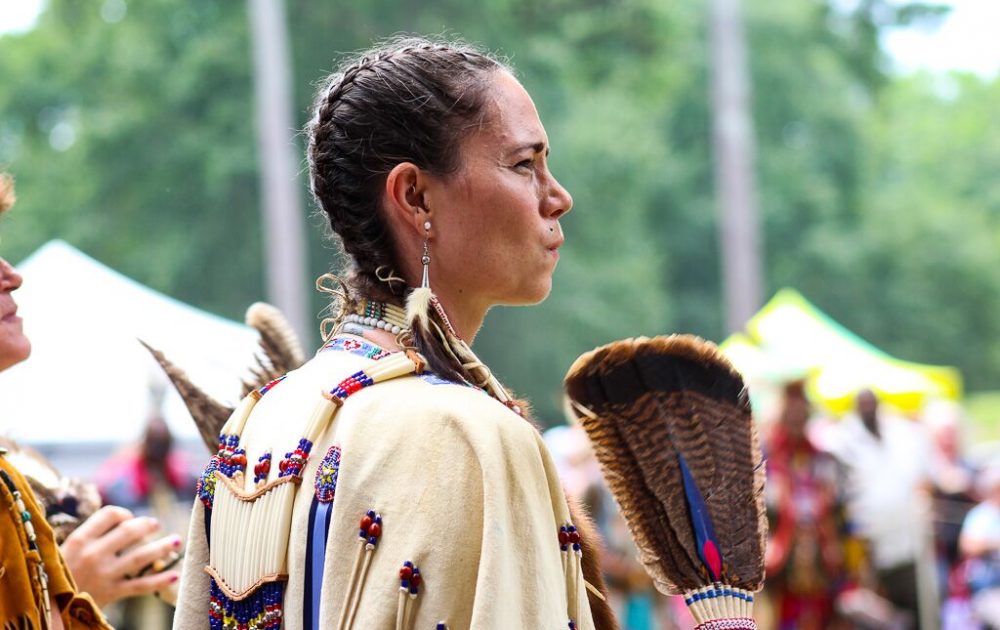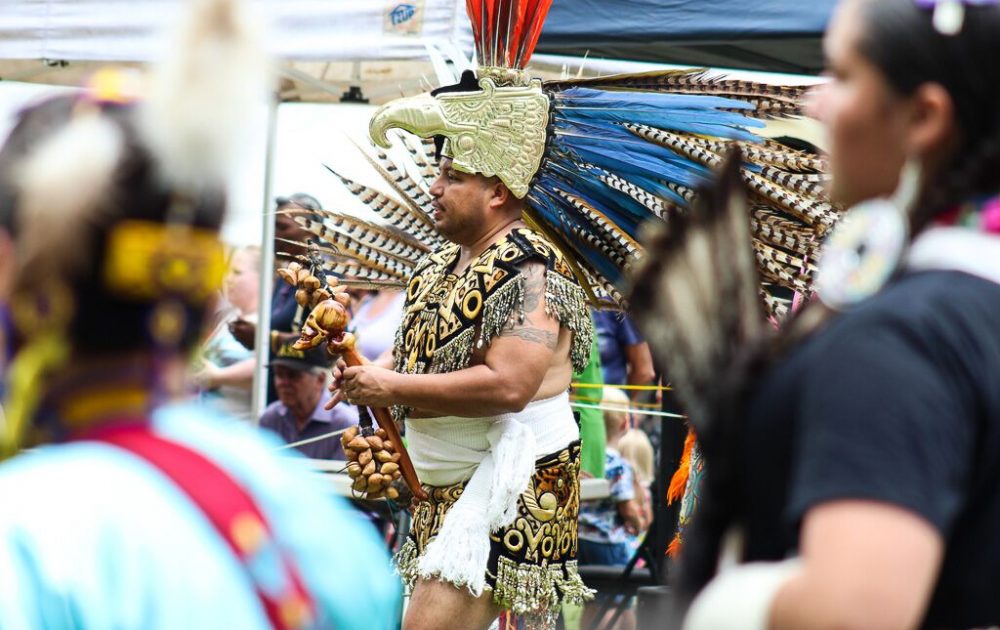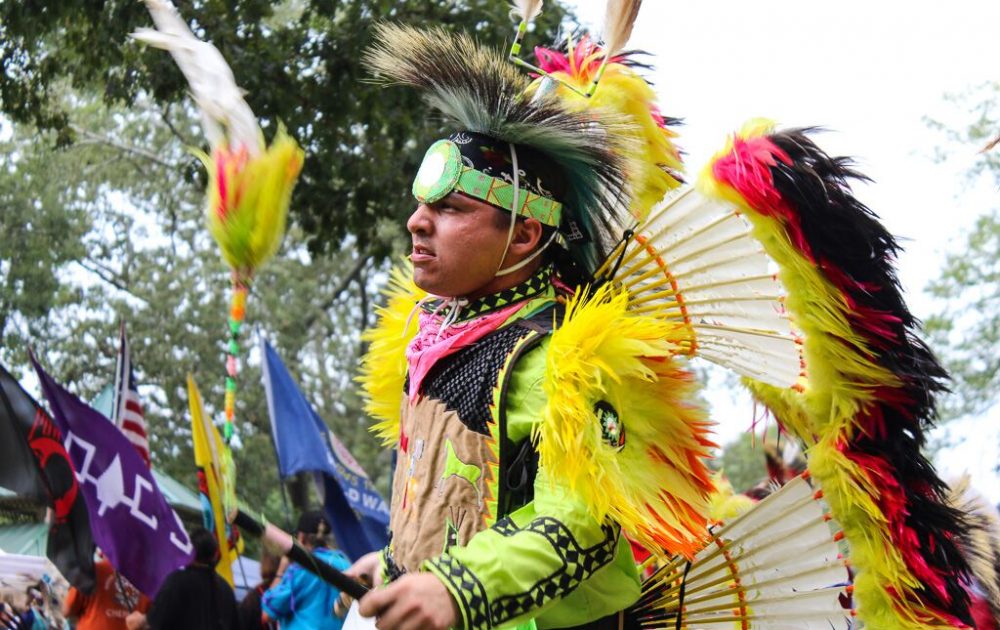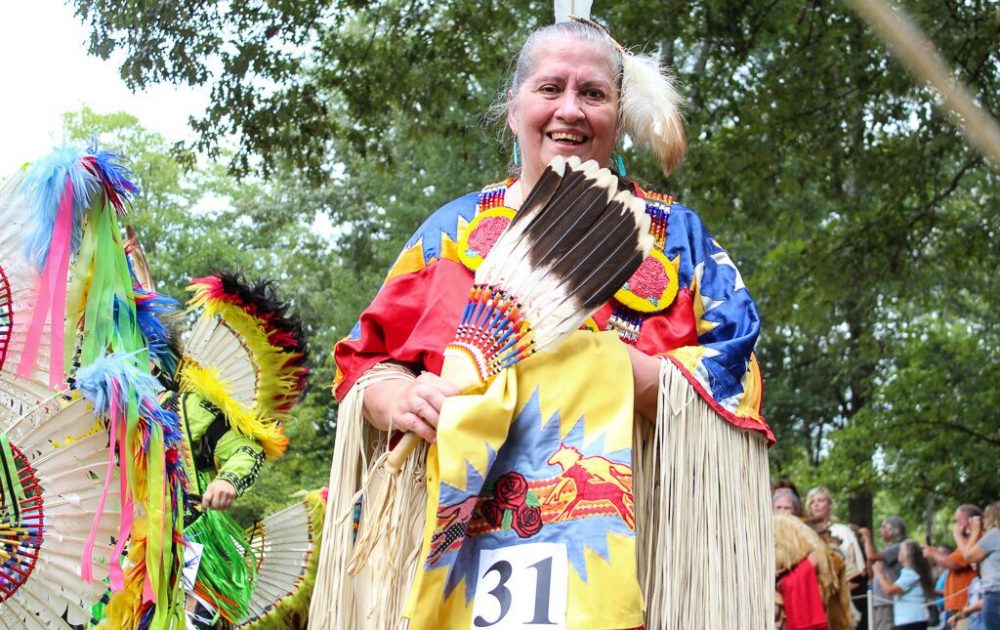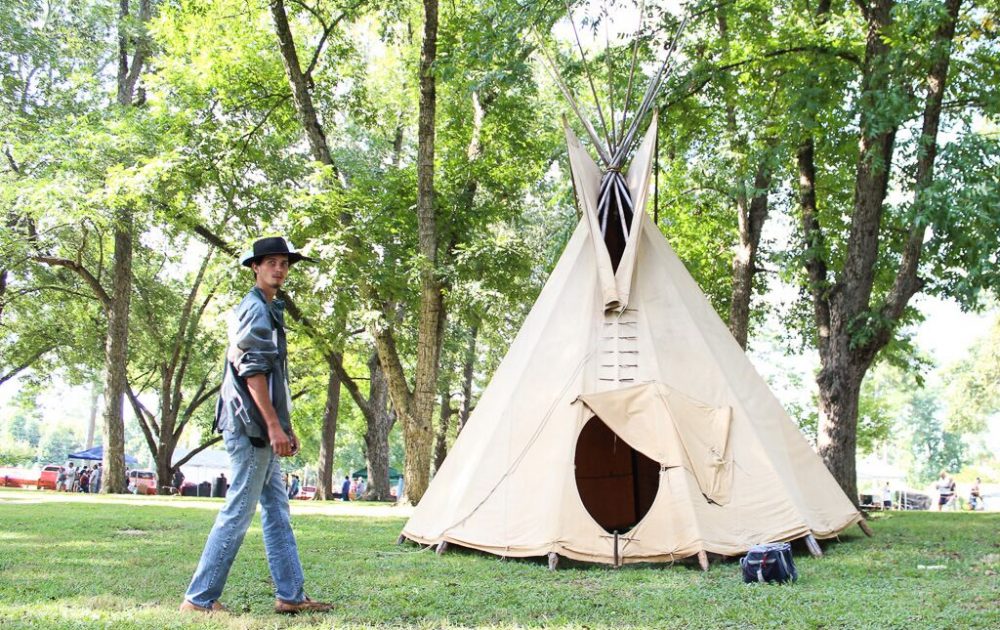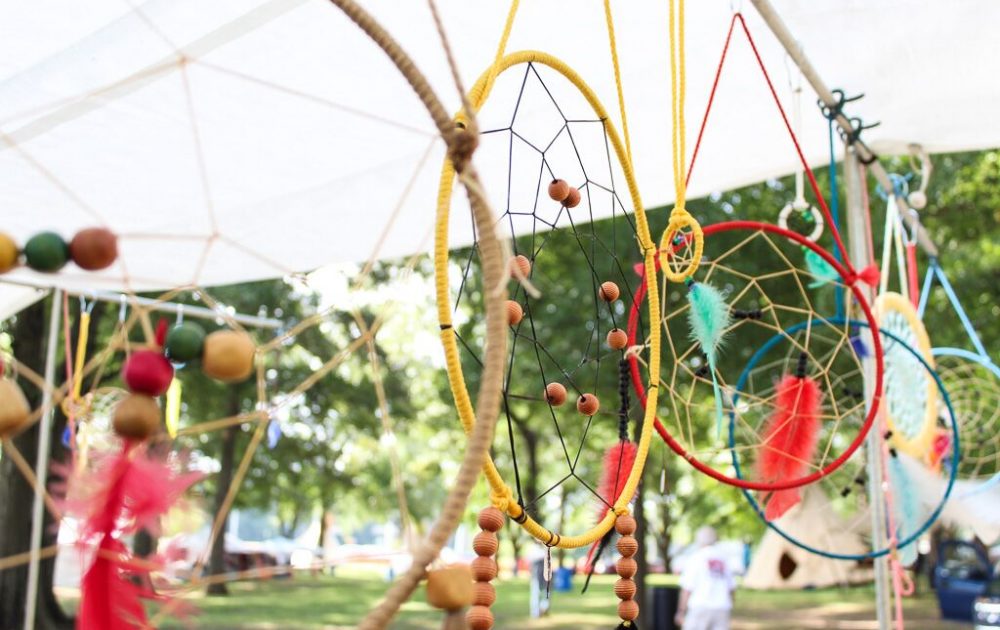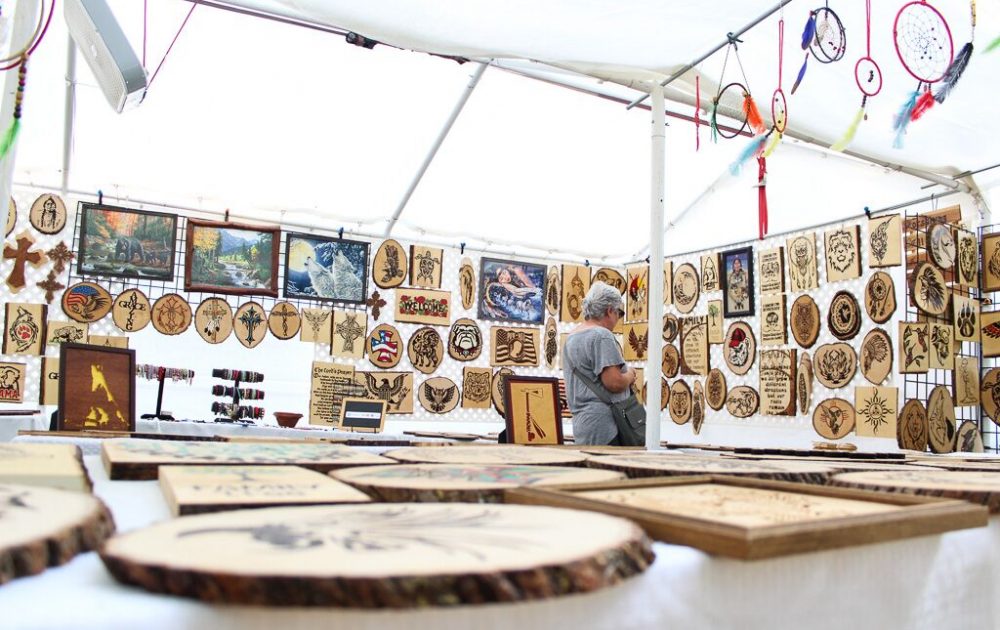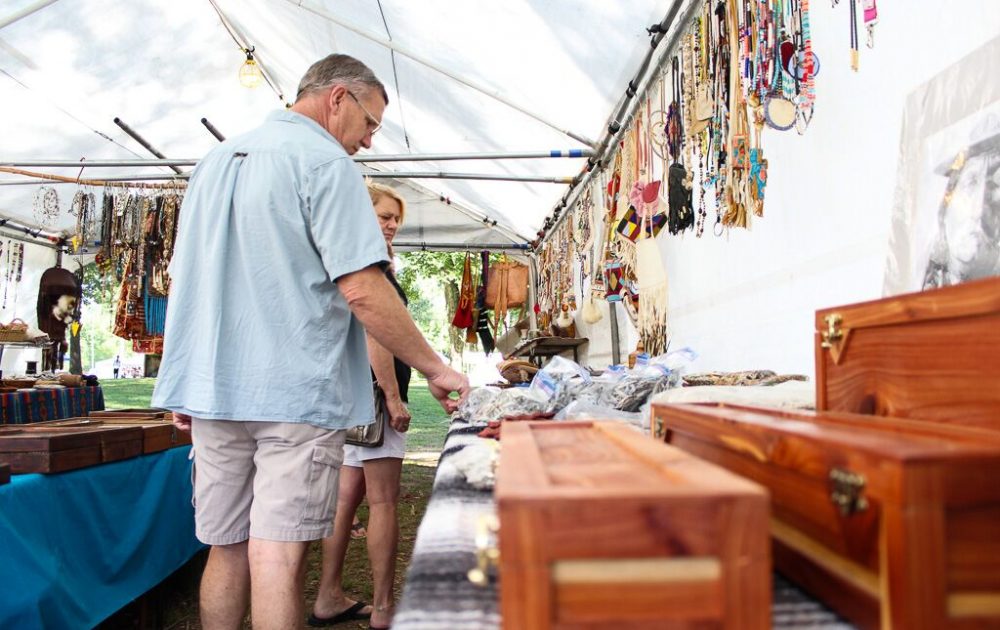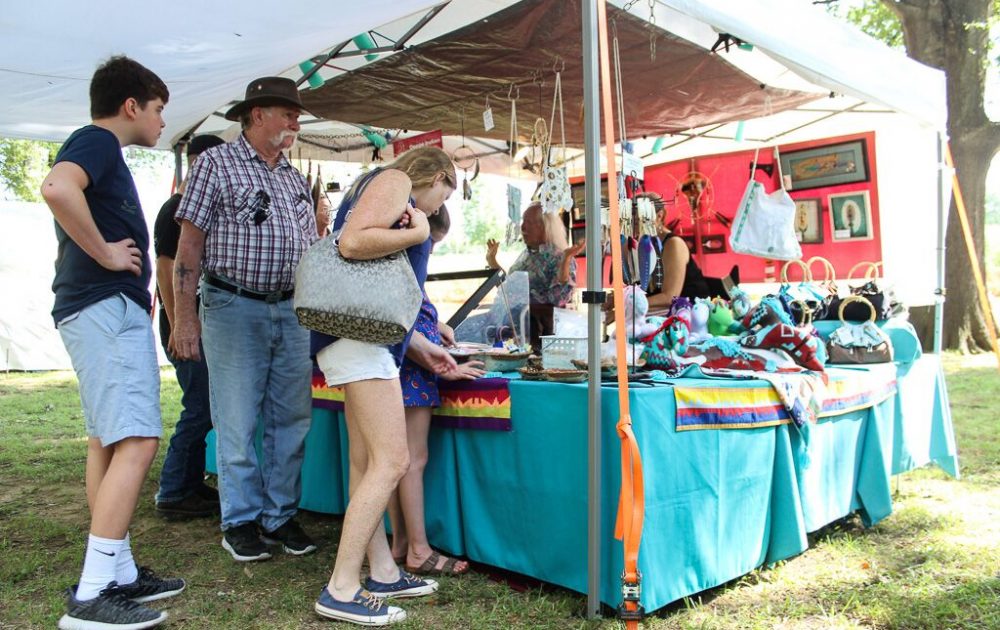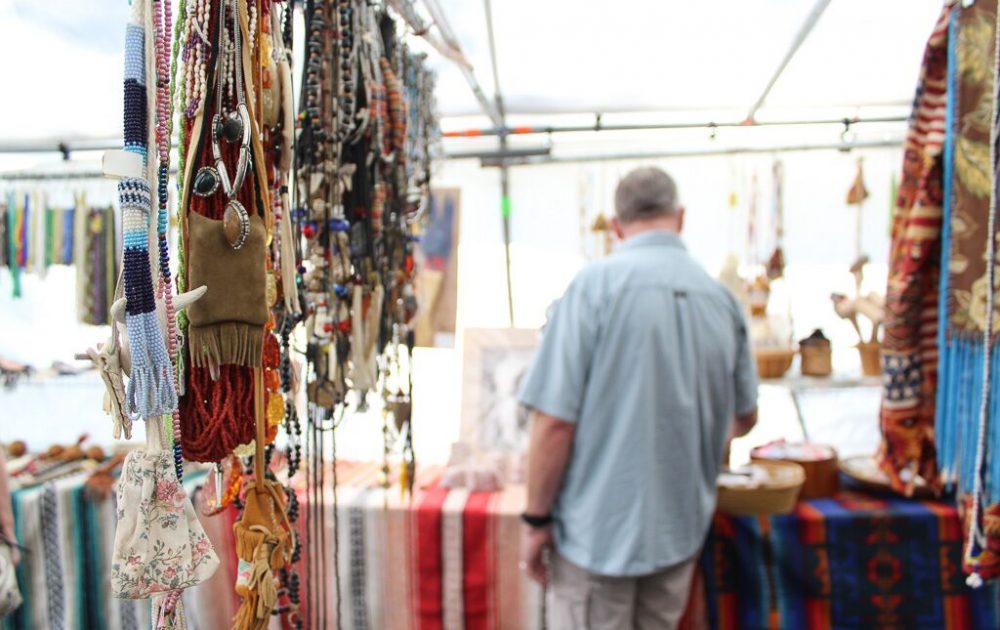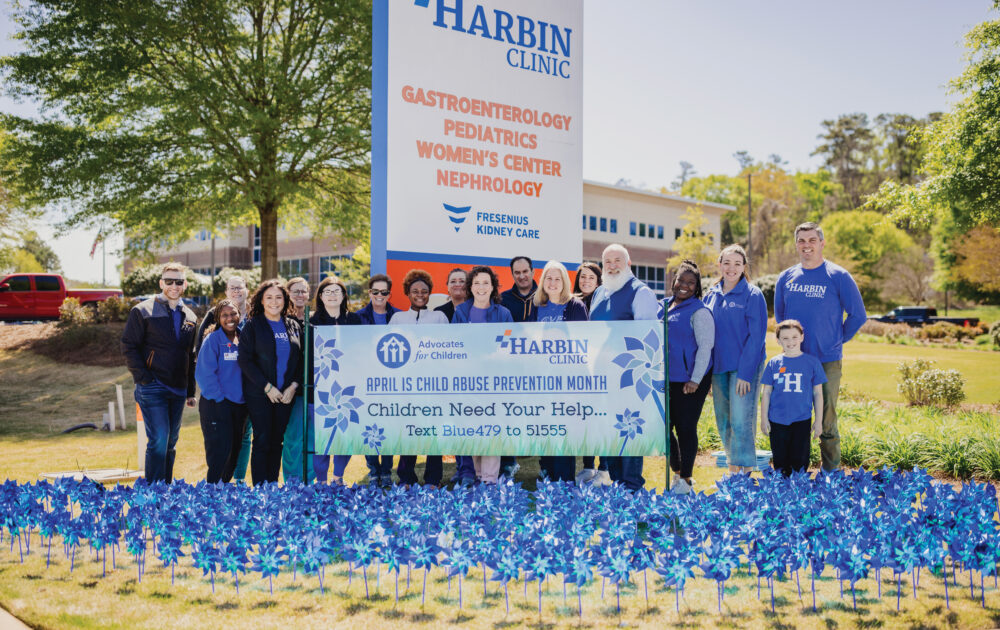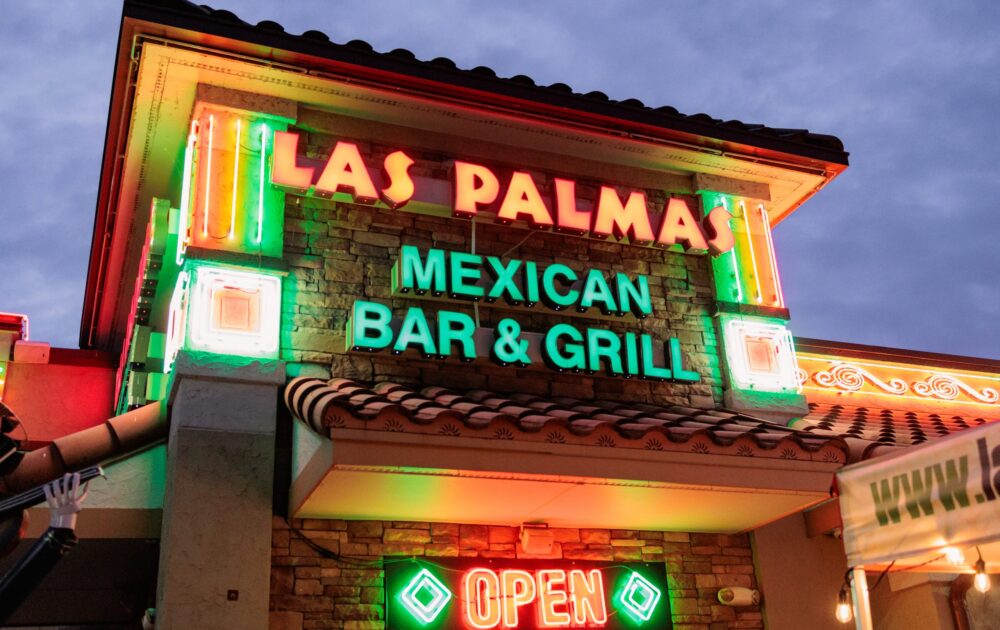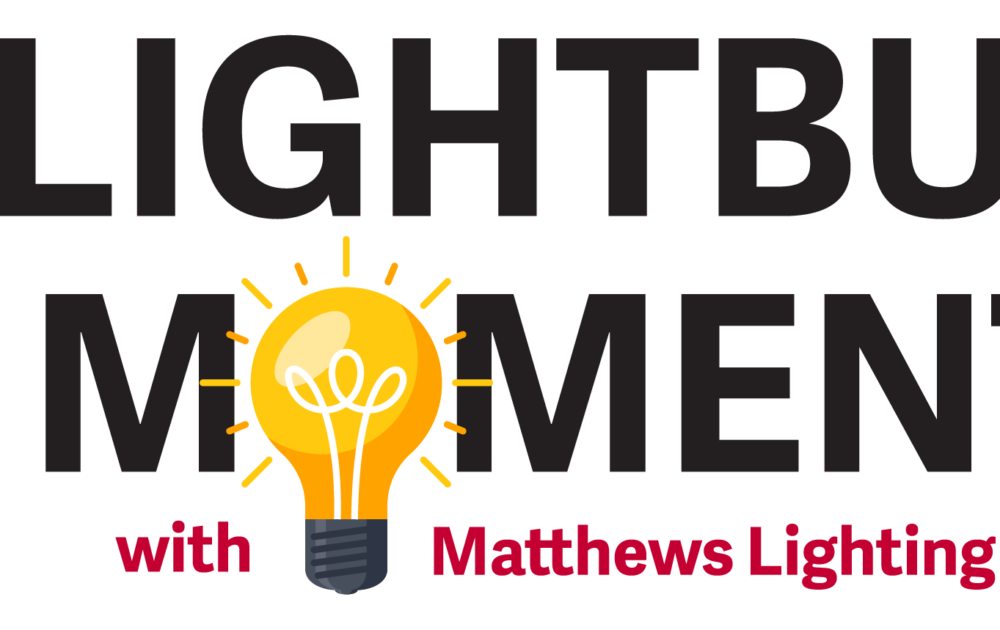
Photos by Leigh Hadaway
For many Americans, to powwow is to gather to confer over any number of things, but for Native Americans it goes much deeper than that. The term originated with a rich native ceremony; a time organized to gather with their native family and celebrate a culture that is now nearly lost. Fortunately, at the Annual Running Water Powwow, Cherokee Homecoming & Ripe Corn Festival, it is also a chance for anyone to watch, learn and experience the traditions celebrated there.
The Running Water Powwow is hosted by the Native American Preservation Association, an organization working to preserve and perpetuate a native culture that has struggled since it was historically marginalized so many years ago.
Joey Pierce, a half-blooded Eastern Band Cherokee, remembers that, even in his 70 years, concerns of acceptance plagued his family.
“When I was young I was told to be proud of who your family is, but don’t ever tell anybody who you are.” Pierce, who has been hosting powwows for 25 years, says that this stigma originated with laws that were established following the Trail of Tears, stating that if you were of Native heritage you were not allowed in the Southern states. “We were called Black Dutch in the area of Tennessee that I’m from,” says Pierce. “My mom was 67 years old before she would recognize her own heritage.”
It is no wonder that the cultural traditions have been hard to maintain when most Natives were left to feel they had to simply blend in.
Many of the skills that were critical to the Native nations have diminished over the years, but one place that these traditions can be revered and traded and studied is at the powwows. Traditional arts and crafts, including silver and turquoise jewelry, dream catchers, handmade flutes, leather goods, quill work and bead work, are available from various vendors at the festival each year.
Pamela Bennett has been vending at powwows for many years under the name RedHanded Trade, selling traditional ceremonial goods, crafts and wearable items that are decorated with prehistoric designs originating with the Mississippian Mound Builders. Remains of these communities can be found throughout the Southeast, including the Etowah Indian Mounds in Cartersville, Ga.
“The Mississippians were the most artistic of the mound builders,” Bennett says. Reviving those images is what drives her work, but she says it is the people that keep her coming back, year after year. “For me it is all about the friends and like-minded people we get to see at the powwows. Because of the prehistoric images in my wares, we have some very interesting conversations in this booth.”
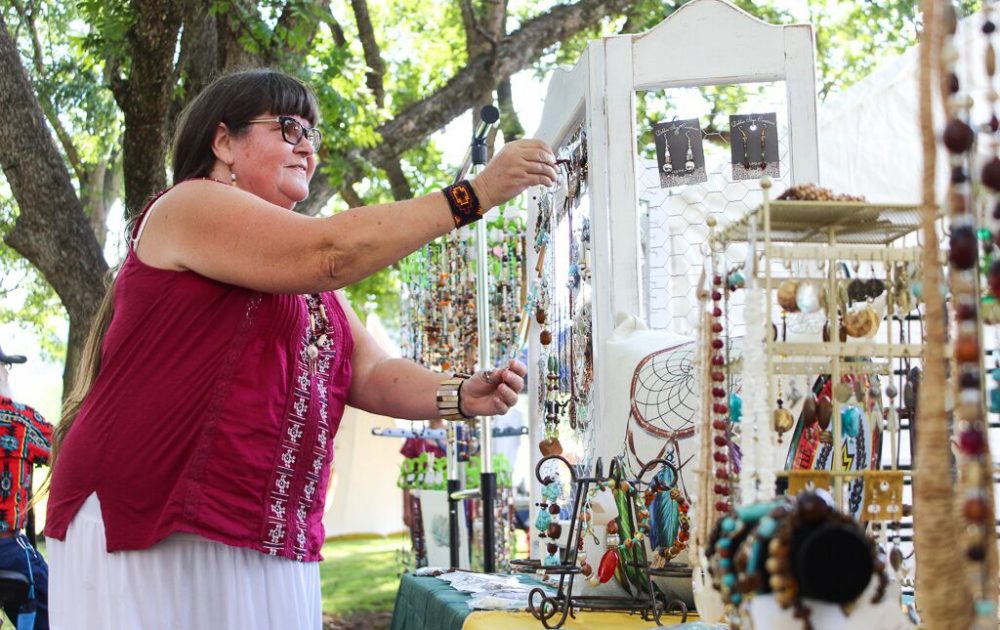
The idea of the Native family and the power of the community is a constant in conversations with the folks you meet at the powwow. And, it is that sense of support and camaraderie that is bringing many of the younger generation back to their roots. 21-year-old Allis Gilstrap has been practicing Native dance since she was 4. “This powwow was the first one my grandfather brought me to,” she says. “He sat me down and said ‘Watch this and tell me if it is something you would like to do.’”
She was immediately hooked, even at such a young age, and she has been dancing ever since. Her grandfather, who passed away in 2016, started dancing when he was in his 30s or 40s with no real knowledge of the traditions, but he told her that when he started dancing it was as if he had done it a million times. “It’s called ancestor memory,” she explains. “It is the theory that you have an innate connection inside of you to the people who came before you that help you know what to do.”
Gilstrap is now a competitive traditional contemporary dancer and travels hours at a time to perform in powwows across the Southeast, in spite of a heavy work and study load as a senior English Literature major at Kennesaw State University. “This is what I love doing. I feel close to my grandfather this way; I feel close to my family and my Native family this way.” She says that her grandfather was her best friend and that the relationships she has built through dancing help her to remember and honor what he taught her. “He was the one who got me into everything. He was a fluent Cherokee speaker, reader, writer and historian. He tried to teach me what he could, but I didn’t realize what a resource I had until it was too late,” Gilstrap says.
Native American dancers are not just about the movement and the music. Traditional regalia they wear are handmade by each dancer and their family and friends. It can take years for a dancer to perfect their “reg”, as Gilstrap calls it, and it is very important to how they represent themselves in the arena. In her teens, she began to mentor with a fellow dancer in how to dance at the competitive level. She now calls him her brother. “In Native terms if someone calls you brother, sister, uncle, aunt, grandma, grandpa, whatever, it doesn’t mean that we are exactly blood related, it just means that it is a role that they step into for you. It is actually a huge honor for someone to say that I want to accept you as my sister.”
At every powwow, the Grand Entry is a ceremonial presenting of the dancers, as well as the presentation of the flags by the Color Guard in honor of veterans. The Native community is reverent in their acknowledgement of veterans, inviting any veterans and mothers of veterans to enter the arena as part of the Grand Entry. Pierce often participates in powwows as a Color Guard leader and he is the organizer of another area powwow, the Euharlee Veterans Powwow, held the first weekend of October.
He, too, stresses the importance of the Native family in all that he does. He talks about how his sons were who drove him to get safely home from Vietnam. “Family is first, no matter what. That’s what’s important to me,” Pierce says. That sense of family spills over into his relationships within the Native community, too. “When I started my Euharlee powwow in 2003, I wanted to bring back the tradition of feeding your vendors and dancers like one big family, so we do just that, feeding everyone together and whatever is left over is offered to whoever else needs to eat.”
At this year’s Running Water Powwow, Thunder Pinard of Natives Doing Native Things organized the first 5K Thunder Run and Wolfe Walk in memory of his old friend and mentor, Chipa Wolfe and his buffalo, Thunder. Wolfe passed away in 2016 and was highly regarded as a leader in the Native community. “We named the race and walk for Chipa and Thunder because they are both very close to my heart and I wanted to make sure we honored them in a way that spoke to the work he did to promote Natives and our culture.” The goal of the Natives Doing Native Things organization is to highlight the way that Native Americans fit into society today. “75 percent of Natives live off of the reservation, we are in the real world and functioning as a useful part of society,” Pinard points out. “The leather and the feathers are very important because if you don’t know where you came from, you can’t get to where you are going,” he says. “But, it is very important now for us to be seen as a part of the society, not only a part of the Native culture.”
The role of Native Americans as members of society who are informed and molded by their heritage is an important lesson that can be taken away from time at a powwow. When Gilstrap explains the importance of the powwow experience for her, it came back to the basics of the traditional drumbeat.
“We like to say that the drumbeat is like your heartbeat,” she smiles. “It is the heartbeat of your mothers and is what keeps you going. It makes you feel better, it fills you up and makes you feel whole, and I think that it is very important that everyone have something that makes them feel better about themselves.”

